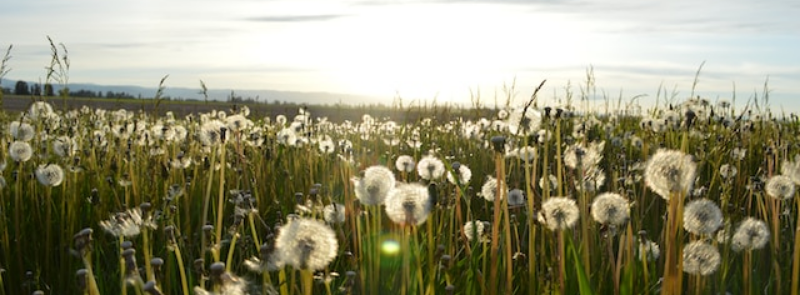
When It Occurs
Every March 28th
Timeline
Days Passed (961)
# Hashtags
#NationalWeedAppreciationDay #WeedsForGood
National Weed Appreciation Day is an annual observance celebrated on March 28. Recall your childhood memories of playing with bright, yellow dandelions found in your garden? Despite being commonly labeled as weeds, dandelions are versatile plants used in both food and herbal medicine. While many perceive weeds as undesired plants out of place, those aware of their usefulness find this celebration meaningful. The truth is, some weeds boast medicinal properties, some are consumed, and others are simply unwelcome. Throughout history, weeds have been both praised and reviled, but regardless of the reason, they deserve recognition. Embrace the presence of a day dedicated to weeds on the calendar. Instead of surprise, celebrate, appreciate, and honor the humble weeds on National Weed Appreciation Day for all their valuable contributions.
What Are Weeds?
-
Definition:
- Weeds are typically defined as plants that grow in places where they are not wanted, especially in gardens, lawns, and agricultural fields. The term "weed" is subjective, as a plant considered a weed in one context may be valued in another. Weeds are often hardy, fast-growing plants that can thrive in a variety of conditions.
-
Common Characteristics:
- Weeds tend to be highly adaptable, capable of growing in disturbed soils, and often produce large quantities of seeds. This allows them to spread quickly and compete with cultivated plants for resources like sunlight, water, and nutrients.
Why Appreciate Weeds?
National Weed Appreciation Day highlights the positive aspects of weeds, challenging the negative connotations often associated with them:
-
Ecological Benefits:
- Weeds play an important role in ecosystems by preventing soil erosion, improving soil health, and providing habitat and food for wildlife. Many weeds are pioneer species, meaning they are among the first plants to colonize disturbed or bare soils, helping to stabilize the soil and create conditions for other plants to grow.
-
Nutritional Value:
- Some weeds are edible and highly nutritious, offering vitamins, minerals, and antioxidants. For example, dandelions, purslane, and lamb's quarters are commonly foraged and used in salads, teas, and other culinary dishes. These wild plants can be a valuable source of nutrition, particularly in times of food scarcity.
-
Medicinal Uses:
- Throughout history, many weeds have been used in traditional medicine for their healing properties. For example, dandelion roots and leaves have been used as a diuretic and to support liver health, while plantain (a common weed, not the banana-like fruit) has been used to soothe insect bites and skin irritations.
-
Biodiversity Support:
- Weeds contribute to biodiversity by providing food and habitat for a variety of insects, birds, and other wildlife. Pollinators like bees and butterflies often rely on weeds as a food source, particularly when other flowering plants are not in bloom.
-
Soil Improvement:
- Some weeds are known as "dynamic accumulators," meaning they draw nutrients from deep within the soil and bring them to the surface, making them more accessible to other plants. For example, deep-rooted weeds like dandelions can help break up compacted soil and improve its structure.
How to Celebrate National Weed Appreciation Day
There are many ways to observe National Weed Appreciation Day, from learning more about the beneficial aspects of weeds to incorporating them into your daily life:
-
Learn About Edible Weeds:
- Take some time to learn about the edible weeds that grow in your area. You might be surprised to find that many common weeds are not only safe to eat but also packed with nutrients. You can forage for these weeds in your garden, yard, or local green spaces, but be sure to properly identify them before consuming.
-
Incorporate Weeds into Cooking:
- Celebrate the day by trying out some recipes that incorporate edible weeds. For example, you can make a salad with dandelion greens, add purslane to your stir-fry, or brew a cup of nettle tea. Experimenting with weeds in the kitchen can open up new culinary possibilities.
-
Explore Medicinal Uses of Weeds:
- Research the medicinal properties of common weeds and consider how they might be used in natural remedies. While you should consult a healthcare professional before using any plant for medicinal purposes, learning about the traditional uses of weeds can deepen your appreciation for their value.
-
Support Wildlife:
- Allow some weeds to grow in your garden or yard to support local wildlife, especially pollinators like bees and butterflies. You can create a designated "wild" area where weeds are welcome, providing food and shelter for various creatures.
-
Educate Others:
- Share what you’ve learned about the benefits of weeds with friends, family, or your community. You can organize a foraging walk, host a workshop on the uses of weeds, or simply talk about the positive aspects of these plants.
-
Practice Sustainable Gardening:
- Instead of using chemical herbicides to control weeds, consider more sustainable methods, such as mulching, hand-pulling, or allowing some beneficial weeds to remain in your garden. This approach can help maintain a healthier ecosystem.
-
Document Your Discoveries:
- Take a walk in nature and observe the weeds growing around you. Document what you find by taking photos, making notes, or sketching the plants. This can be a fun and educational way to connect with the natural world.
-
Create Art with Weeds:
- Get creative by using weeds in art projects. You can press and dry weeds to create botanical art, make natural dyes from plants like nettles or dandelions, or use weeds in floral arrangements.
Common Edible and Medicinal Weeds
-
Dandelion (Taraxacum officinale):
- Edible: The leaves can be used in salads, the roots can be roasted and brewed as a coffee substitute, and the flowers can be used to make wine.
- Medicinal: Dandelions are known for their diuretic properties and are often used to support liver health.
-
Purslane (Portulaca oleracea):
- Edible: The succulent leaves and stems can be eaten raw in salads or cooked as a vegetable. Purslane is rich in omega-3 fatty acids.
-
Plantain (Plantago major and Plantago lanceolata):
- Edible: The young leaves can be eaten raw or cooked, and the seeds can be ground into flour.
- Medicinal: Plantain leaves are traditionally used to soothe skin irritations, insect bites, and minor wounds.
-
Nettle (Urtica dioica):
- Edible: Nettle leaves can be cooked and used in soups, teas, or as a spinach substitute. Nettles are high in vitamins and minerals.
- Medicinal: Nettles are commonly used to support joint health and as a natural remedy for allergies.
-
Lamb's Quarters (Chenopodium album):
- Edible: The leaves can be eaten raw or cooked, similar to spinach. Lamb's quarters are rich in vitamins A and C, as well as calcium and iron.
Fun Facts About Weeds
-
Weeds as Pioneers: Weeds are often the first plants to colonize disturbed or barren areas, helping to restore ecosystems by stabilizing soil and providing a habitat for other species.
-
Wild Edibles: Many of the plants we consider weeds today were once cultivated as food crops. For example, lamb's quarters were grown as a vegetable in ancient times, and dandelions were intentionally brought to North America by European settlers for their medicinal and culinary uses.
-
Adaptability: Weeds are highly adaptable plants, capable of thriving in a wide range of environmental conditions. Their resilience is one of the reasons they are so successful in colonizing new areas.
-
Pollinator Support: Weeds like clover, dandelions, and goldenrod are important sources of nectar and pollen for bees, butterflies, and other pollinators.
Conclusion
National Weed Appreciation Day is a celebration of the overlooked and often misunderstood plants that many of us refer to as weeds. By taking a moment to appreciate the ecological benefits, nutritional value, and medicinal properties of weeds, we can gain a deeper understanding of their role in the natural world. Whether through foraging, cooking, gardening, or simply learning more about these resilient plants, National Weed Appreciation Day offers an opportunity to rethink our relationship with weeds and to see them not just as nuisances, but as valuable members of our ecosystems.


